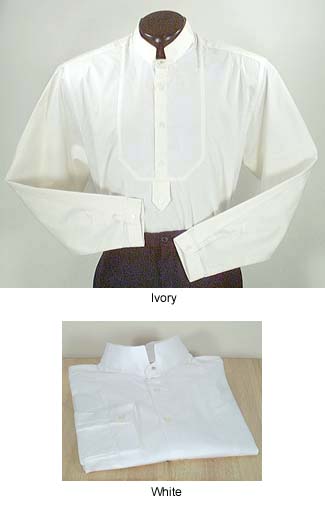Happy Stroller
One of the Regulars
- Messages
- 136
- Location
- Earth
Some bibs on shirts specially for White Tie occassions have a bottom tag with a button hole to attach to a button behind the waistband of the trousers. The purpose of buttoning the bib to the trousers is to prevent a stiff bib from bellowing out (presumably the wearer has a well-endowed abdomen resulting in a bib panel that inclines outwards) when the wearer sits down.
Usually such bib panels are made from pique cotton material to distinguish them from the rest of the dress shirt, which is usually made from broadcloth cotton.
Why is the bib material pique cotton? In what way is pique cotton superior to making the bib panel much stiffer than the rest of the shirt? BTW, how does one pronounce the word 'pique'? What about 'risque'?
One of my friends says that a stiff bib panel requires a built-in inner reinforcement panel, made from similar material to that which is inside a cummerbund. She does not know what that stiffening material is called. Is she correct?
But if the stiffness comes from that inner material, then starching is not necessary, so how would one then be able to make the bib bosom look shinier than the rest of the shirt?
Another friend claims that the bib panel is separable from the shirt and is attached to the shirt with the help of studs and that trouser tag button. Is he correct?
Usually such bib panels are made from pique cotton material to distinguish them from the rest of the dress shirt, which is usually made from broadcloth cotton.
Why is the bib material pique cotton? In what way is pique cotton superior to making the bib panel much stiffer than the rest of the shirt? BTW, how does one pronounce the word 'pique'? What about 'risque'?
One of my friends says that a stiff bib panel requires a built-in inner reinforcement panel, made from similar material to that which is inside a cummerbund. She does not know what that stiffening material is called. Is she correct?
But if the stiffness comes from that inner material, then starching is not necessary, so how would one then be able to make the bib bosom look shinier than the rest of the shirt?
Another friend claims that the bib panel is separable from the shirt and is attached to the shirt with the help of studs and that trouser tag button. Is he correct?



